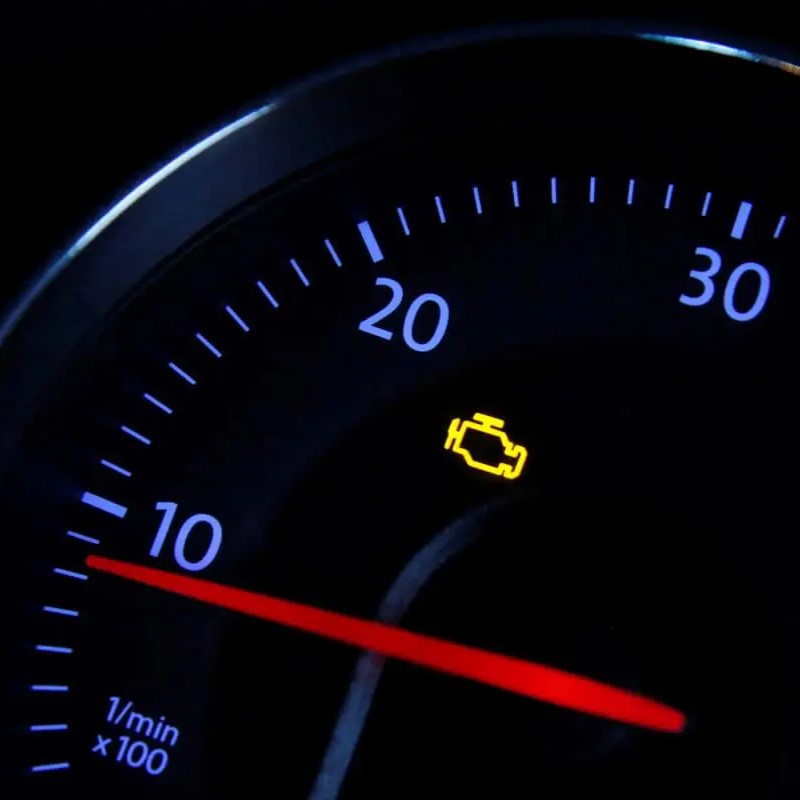A car that hesitates or struggles to accelerate is a frustrating and potentially dangerous situation. It becomes even more concerning when accompanied by the dreaded check engine light. This illuminated warning is the car’s way of saying something isn’t right, and it’s affecting performance. But fear not! This guide will equip you with the knowledge to understand what’s happening and navigate the next steps.
Deciphering the Check Engine Light
First, let’s address the check engine light. This universal symbol, though alarming, doesn’t pinpoint the exact issue. It simply indicates a problem within the engine’s control system, which encompasses various sensors, emissions components, and engine management functions. The culprit could range from a minor sensor malfunction to a more serious problem.
Common Causes of Reduced Acceleration with Check Engine Light
Here are some of the most frequent reasons why your car might be struggling to accelerate alongside an illuminated check engine light:
- Fuel System Issues: Restricted fuel flow can drastically hinder acceleration. A clogged fuel filter, faulty fuel pump, or malfunctioning fuel pressure regulator are all possible suspects.
- Ignition System Problems: Without a proper spark, the engine can’t combust fuel efficiently, leading to sluggish acceleration. Faulty spark plugs, worn-out spark plug wires, or a malfunctioning ignition coil could be at fault.
- Air Intake Issues: The engine needs a precise air-fuel mixture for optimal performance. A dirty air filter, clogged mass airflow sensor (MAF sensor), or malfunctioning throttle position sensor (TPS) can disrupt this balance, causing acceleration problems.
- Sensor Malfunctions: Various sensors monitor engine functions and relay information to the computer. A faulty sensor can send incorrect data, causing the engine control unit (ECU) to adjust engine operation incorrectly, resulting in poor acceleration.
- Emission System Problems: Modern cars have complex emission control systems. A malfunctioning component, such as a clogged catalytic converter or faulty oxygen sensor, can affect engine performance and trigger the check engine light.

Additional Symptoms to Consider
While reduced acceleration and the check engine light are the primary concerns, be mindful of any additional symptoms that might offer clues. These can include:
- Rough idling: The engine vibrates abnormally when stopped.
- Engine hesitation: The engine sputters or struggles to maintain a steady RPM during acceleration.
- Increased fuel consumption: Reduced efficiency due to the underlying issue.
- Unusual exhaust fumes: Black smoke might indicate a rich fuel mixture, while white smoke could signal coolant burning.
Diagnosing the Problem
Unfortunately, pinpointing the exact cause without proper tools and expertise can be challenging. However, some steps can help:
Consult your car’s owner’s manual:
It might offer basic troubleshooting steps or specific codes related to the check engine light.
Invest in an OBD-II scanner:
This affordable tool plugs into your car’s diagnostic port and retrieves trouble codes stored by the ECU. These codes can provide valuable clues about the issue.
Taking Action
Once you have a better understanding of the potential causes, here are your options:
- Simple Fixes: If the problem seems minor, like a dirty air filter, you might be able to address it yourself by replacing the filter. However, proceed with caution and only attempt tasks you’re comfortable with.
- Professional Diagnosis: For more complex issues, seeking a qualified mechanic is crucial. They have the expertise and diagnostic tools to pinpoint the exact cause and recommend a course of action.

The Importance of Repair
Ignoring a check engine light and the accompanying acceleration problems is not recommended. It can lead to further damage, potentially causing more expensive repairs down the road. Additionally, a poorly functioning car might not meet emission standards, resulting in failing an emissions test.
Prevention is Key
Regular car maintenance is vital for preventing future problems. This includes adhering to the manufacturer’s recommended service schedule, which includes timely oil changes, spark plug replacements, and air filter changes. By staying on top of preventive maintenance, you can minimize the risk of encountering these issues and ensure your car runs smoothly and efficiently.
Examples of common diagnostic trouble codes (DTCs) associated
The check engine light might not tell the whole story, but the diagnostic trouble code (DTC) it triggers can provide valuable clues. Here are some frequent DTCs associated with acceleration issues:
- P0100 – P0103: These codes indicate issues with the Mass Airflow (MAF) sensor, which measures incoming air. A faulty MAF sensor can lead to incorrect air-fuel mixture and reduced acceleration.
- P0171 – P0172: These codes point towards a problem with the fuel trim system. This system adjusts fuel delivery based on various factors. A malfunctioning fuel trim system can cause a lean (too little fuel) or rich (too much fuel) mixture, impacting acceleration.
- P0299 – P0304: These codes signify engine misfires in specific cylinders (numbers indicated after the P code). Misfires occur when a cylinder fails to combust fuel properly, leading to rough idling and sluggish acceleration.
- P0322 – P0328: These codes relate to problems with the ignition system, such as a faulty ignition coil or crankshaft position sensor. Issues with the ignition system can disrupt the spark delivery, hindering proper combustion and affecting acceleration.
- P0420 – P0430: These codes indicate problems with the catalytic converter, a component in the exhaust system responsible for reducing emissions. A clogged or malfunctioning catalytic converter can restrict exhaust flow and hinder engine performance, including acceleration.
It’s important to note that these are just a few examples, and the specific DTCs associated with your car’s acceleration problems will vary depending on the make, model, and year. While some DTCs might offer a clear indication of the issue, others might require further diagnosis by a qualified mechanic.

Preventive measures to avoid future acceleration problems
While a car struggling to accelerate with the check engine light is a present concern, let’s shift gears and focus on preventing future issues. Here are some key preventive measures:
- Regular Maintenance: This is your first line of defense. Follow your car’s manufacturer-recommended service schedule for oil changes, spark plug replacements, air filter changes, and other routine maintenance. These services keep your engine components functioning optimally and prevent problems before they arise.
- Fuel System Care: Use high-quality fuel and consider adding fuel system cleaners periodically (consult your owner’s manual for recommendations). This helps prevent buildup and keeps your fuel system running smoothly.
- Sensor Check-Ups: Sensors play a crucial role in engine management. During routine maintenance, have your mechanic check for any sensor wear or potential malfunctions. Early detection can prevent problems down the line.
- Emission System Upkeep: A healthy emission system contributes to not only cleaner air but also efficient engine performance. Follow the manufacturer’s recommendations for cleaning or replacing emission control components when necessary.
- Clean Driving Habits: Aggressive driving, such as rapid acceleration and harsh braking, can put extra strain on your engine. Smooth and controlled driving promotes engine longevity and fuel efficiency.
- Listen to Your Car: Pay attention to any unusual noises, vibrations, or changes in performance. These can be early indicators of potential issues. Addressing them promptly can prevent minor problems from snowballing into major repairs.
By incorporating these preventive measures into your car care routine, you can significantly reduce the risk of encountering acceleration problems in the future, ensuring smoother, safer, and more enjoyable driving experiences.
Driving with Confidence
While a check engine light and sluggish acceleration can be unsettling, understanding the potential causes and taking appropriate action empowers you to address the situation effectively. With proper diagnosis and repair, you can get your car back to performing at its best and ensure a safe and enjoyable driving experience. Remember, knowledge is power, and this guide equips you with the tools to navigate this common automotive concern.





